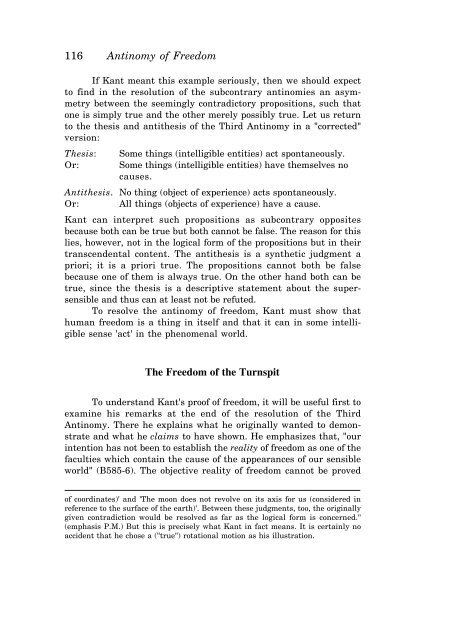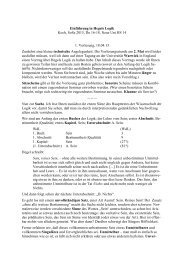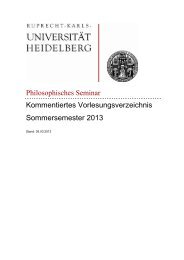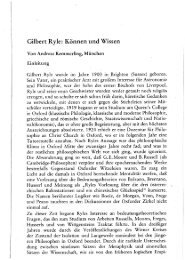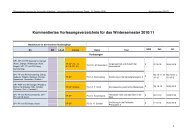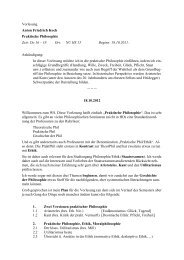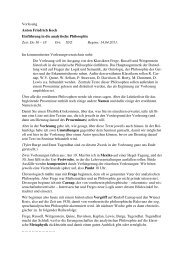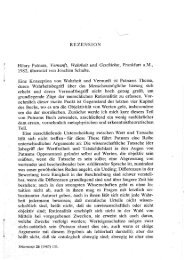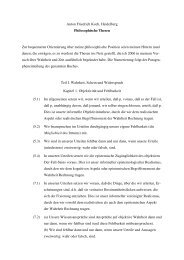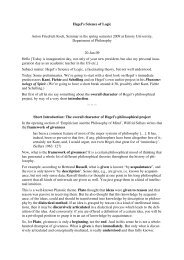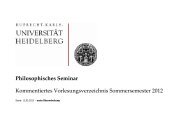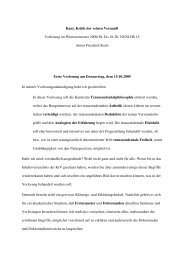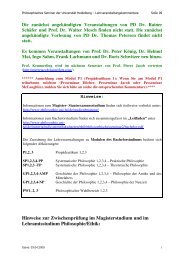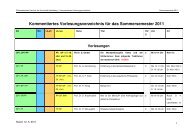KANT'S CRITIQUE OF TELEOLOGY IN BIOLOGICAL EXPLANATION
KANT'S CRITIQUE OF TELEOLOGY IN BIOLOGICAL EXPLANATION
KANT'S CRITIQUE OF TELEOLOGY IN BIOLOGICAL EXPLANATION
You also want an ePaper? Increase the reach of your titles
YUMPU automatically turns print PDFs into web optimized ePapers that Google loves.
116 Antinomy of Freedom<br />
If Kant meant this example seriously, then we should expect<br />
to find in the resolution of the subcontrary antinomies an asymmetry<br />
between the seemingly contradictory propositions, such that<br />
one is simply true and the other merely possibly true. Let us return<br />
to the thesis and antithesis of the Third Antinomy in a "corrected"<br />
version:<br />
Thesis: Some things (intelligible entities) act spontaneously.<br />
Or: Some things (intelligible entities) have themselves no<br />
causes.<br />
Antithesis. No thing (object of experience) acts spontaneously.<br />
Or: All things (objects of experience) have a cause.<br />
Kant can interpret such propositions as subcontrary opposites<br />
because both can be true but both cannot be false. The reason for this<br />
lies, however, not in the logical form of the propositions but in their<br />
transcendental content. The antithesis is a synthetic judgment a<br />
priori; it is a priori true. The propositions cannot both be false<br />
because one of them is always true. On the other hand both can be<br />
true, since the thesis is a descriptive statement about the supersensible<br />
and thus can at least not be refuted.<br />
To resolve the antinomy of freedom, Kant must show that<br />
human freedom is a thing in itself and that it can in some intelligible<br />
sense 'act' in the phenomenal world.<br />
The Freedom of the Turnspit<br />
To understand Kant's proof of freedom, it will be useful first to<br />
examine his remarks at the end of the resolution of the Third<br />
Antinomy. There he explains what he originally wanted to demonstrate<br />
and what he claims to have shown. He emphasizes that, "our<br />
intention has not been to establish the reality of freedom as one of the<br />
faculties which contain the cause of the appearances of our sensible<br />
world" (B585-6). The objective reality of freedom cannot be proved<br />
of coordinates)' and 'The moon does not revolve on its axis for us (considered in<br />
reference to the surface of the earth)'. Between these judgments, too, the originally<br />
given contradiction would be resolved as far as the logical form is concerned."<br />
(emphasis P.M.) But this is precisely what Kant in fact means. It is certainly no<br />
accident that he chose a ("true") rotational motion as his illustration.


